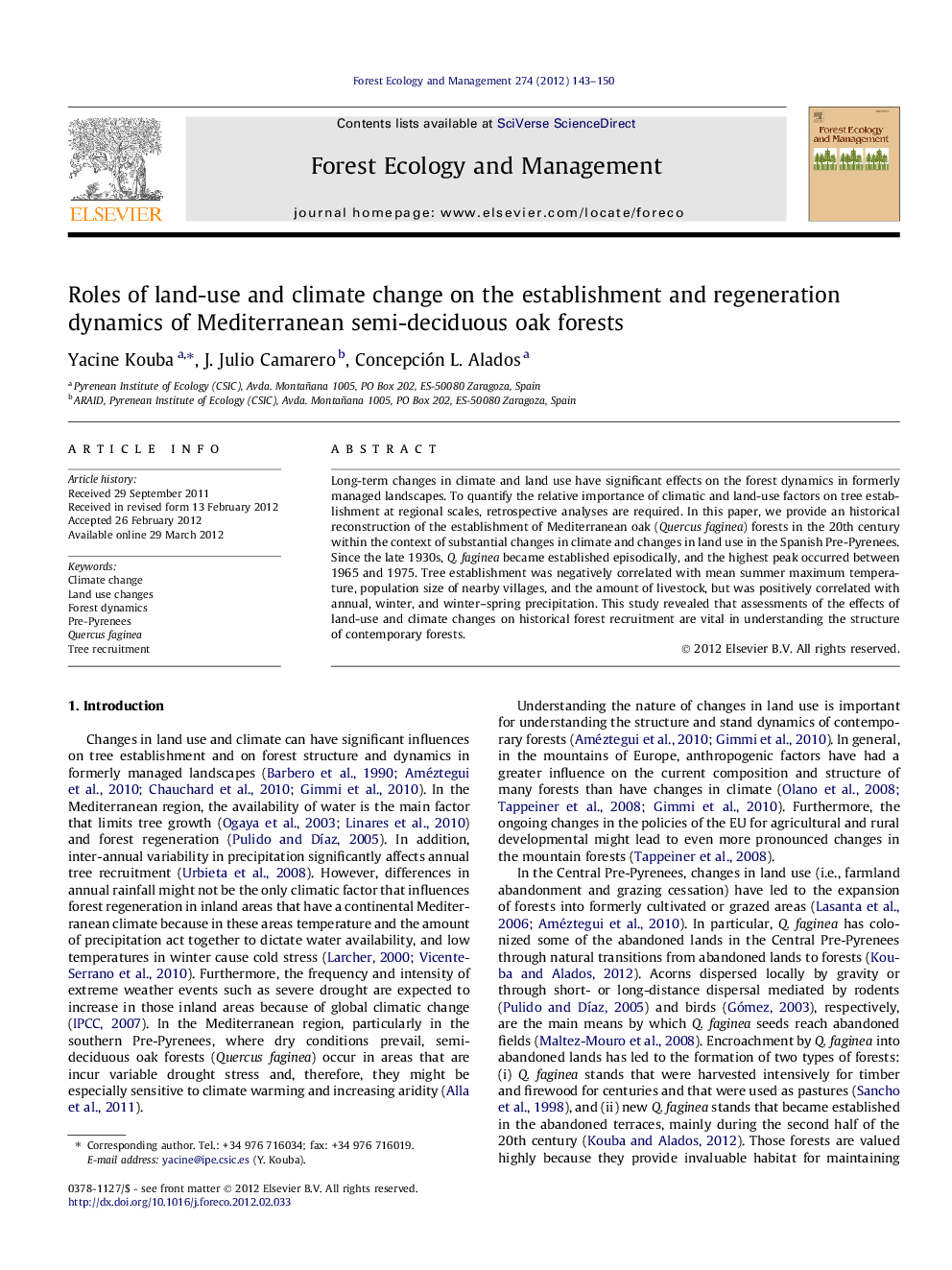| کد مقاله | کد نشریه | سال انتشار | مقاله انگلیسی | نسخه تمام متن |
|---|---|---|---|---|
| 87179 | 159236 | 2012 | 8 صفحه PDF | دانلود رایگان |

Long-term changes in climate and land use have significant effects on the forest dynamics in formerly managed landscapes. To quantify the relative importance of climatic and land-use factors on tree establishment at regional scales, retrospective analyses are required. In this paper, we provide an historical reconstruction of the establishment of Mediterranean oak (Quercus faginea) forests in the 20th century within the context of substantial changes in climate and changes in land use in the Spanish Pre-Pyrenees. Since the late 1930s, Q. faginea became established episodically, and the highest peak occurred between 1965 and 1975. Tree establishment was negatively correlated with mean summer maximum temperature, population size of nearby villages, and the amount of livestock, but was positively correlated with annual, winter, and winter–spring precipitation. This study revealed that assessments of the effects of land-use and climate changes on historical forest recruitment are vital in understanding the structure of contemporary forests.
► We studied the effect of climate and land-use changes on the establishment and regeneration dynamics of Quercus faginea forests.
► We compared size and growth of Q. faginea trees in coppice stands and new stands established on abandoned terraces.
► Climate and land-use changes have driven the dynamics of Q. faginea forests.
► Q. faginea trees on the abandoned terraces had largest diameters and growth rates.
Journal: Forest Ecology and Management - Volume 274, 15 June 2012, Pages 143–150